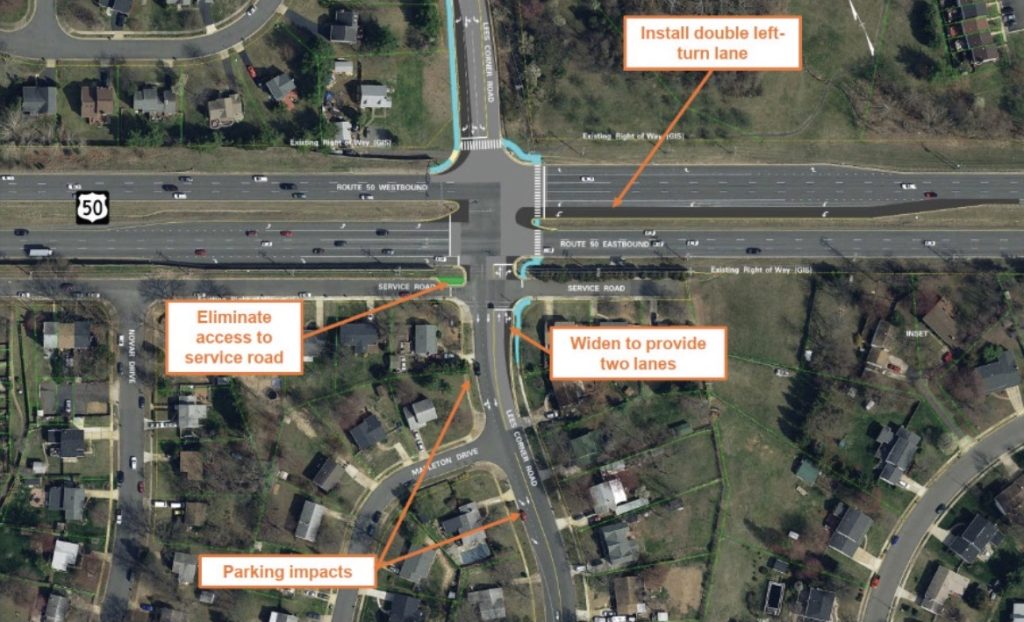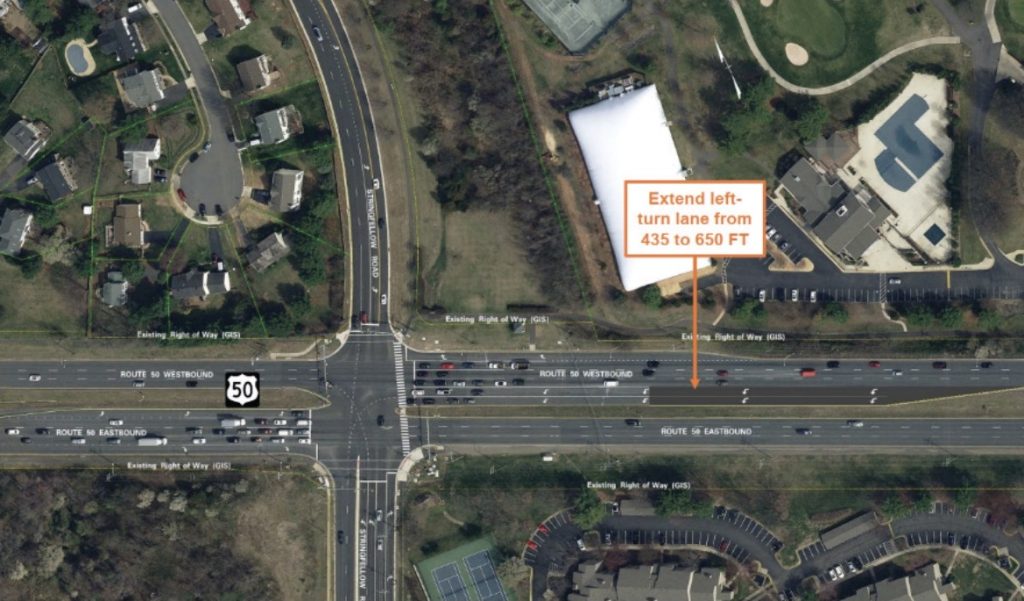[COMMUNITY]
Final Report on U.S. 50 Corridor
May Set Stage for smoother Commutes
by Eric Johnson | photos courtesy of the Virginia Department of Transportation
t’s 7 a.m. and your car’s GPS road map shows a foreboding, dark-red line for the eastbound lanes of U.S. 50 near Centreville Road. It’s like this almost every morning. And come evening, that dark-red line representing heavy-to-jammed traffic will shift to the westbound lanes.
But in the near future, the dark-red lines and backups that frequently slow drivers to a crawl on a nearly 2-mile segment of U.S. 50 between Virginia Route 28 and Stringfellow Road in Chantilly could become a thing of the past. State transportation officials, county officials, local government leaders and the public have spent years discussing how to resolve this traffic headache, and a plan setting the stage for possible road improvements is due to be released soon.
The long-awaited Route 50 Chantilly STARS Study, Phase 2 final report will be posted to the study web page (https://www.virginiadot.org/projects/northern virginia/rt50chantillystudy.asp) by the end of the year, according to Mike Murphy, Senior Communications Specialist for the Virginia Department of Transportation (VDOT), Northern Virginia District.
After the report is released, Murphy said, “it will be up to Fairfax County to decide if it wants to move ahead with the recommendations in the Phase 2 final report and apply for funding” for a road improvement project. “Therefore, the construction dates are dependent on if and when the county is successful in securing funding.”
These potential road improvements have been on Chantilly’s radar ever since 2017, when VDOT launched a Strategically Targeted Affordable Roadway Solutions (STARS) Phase 1 study to assess potential operational and safety improvements for the congested section of U.S. 50. Phase 2 builds on the efforts of the Phase 1 study to re-evaluate and refine the proposed alternatives at the U.S. 50-Lees Corner Road and U.S. 50-Stringfellow Road intersections, and considers the concerns raised during Phase 1 public outreach efforts, Murphy said.
The corridor under consideration handles about 60,000 vehicles a day, according to a 2021 traffic survey, Murphy said. That’s the most recent vehicle count available and underscores the importance of the route for daily commuters and other drivers.
The estimated costs for Phase 2 are still being determined and will be included in the final report, Murphy said.
Over the years, development options and costs have been discussed at length by a Stakeholder Working Group (SWG) comprised of representatives from VDOT, Fairfax County and consultants. Public feedback that was collected as a part of the STARS Phase 1 study “provided valuable insight into community concerns prior to developing alternatives as part of the Phase 2 study,” Murphy said.
Among other things, the Phase 1 study called for adding reflective traffic signal backplates, upgrading pedestrian ramps to Americans with Disabilities Act sta

1. Aerial view of the U.S. 50 corridor study area for Phase 1 and Phase 2
An estimated 60,000 vehicles a day travel on u.s. 50 in Chantilly

2. Recommendations at U.S. 50 and Lees Corner Road intersection

3. Recommendation at U.S. 50 corridor and Stringfellow Road intersection
standards, and replacing and adding pavement and crosswalk markings along the entire 2-mile stretch. It also suggested reconfiguring and modifying intersections, and adopting access management strategies for road-adjacent properties.
The first of two public information meetings for the Phase 2 study process was held in September 2021 to summarize the completed Phase 1 study and explain existing safety and traffic operational conditions along the corridor.
A second meeting in March 2022 presented the public with the alternatives under consideration. Community feedback was gathered and questions answered. An online survey collected more public feedback on the proposed alternatives and helped determine where investments should be made to improve the study area in the future.
The public feedback was considered by the SWG when selecting the recommended improvement alternatives.
The first recommendation at the Lees Corner Road intersection includes closing the westbound access to the service road from Lees Corner Road in order to improve the efficiency of the westbound Route 50 left turn to Lees Corner Road. The benefit of this improvement will reduce conflict points at the service road intersection at Lees Corner Road and minimize westbound cut-through traffic on the service road.
The study also recommends installing a second westbound Route 50 left-turn lane to Lees Corner Road in order to improve the efficiency of the left-turn lane and reduce eastbound Route 50 travel times by allocating more green time to eastbound Route 50.
More details will be released with the final report. How much time elapses between the release of the fine report and the start of a possible improvement project will depend on decisions that must be made by Fairfax County officials.
When the recommendations from the Phase 1 and Phase 2 studies are prioritized by Fairfax County, they can pursue funding for implementation of the improvements. If funding is obtained, the project(s) will be incorporated into the VDOT Six-Year Improvement Plan, and then enter the project development process.
“The duration of construction is dependent on whatever Fairfax County decides to submit in their application for funding,” Murphy said. “The county may decide they want to do all of what’s recommended in the STARS Study or just portions; therefore, if they choose to pursue just portions of what was recommended, that would in theory take less time to construct than if they pursued everything that was recommended.”
